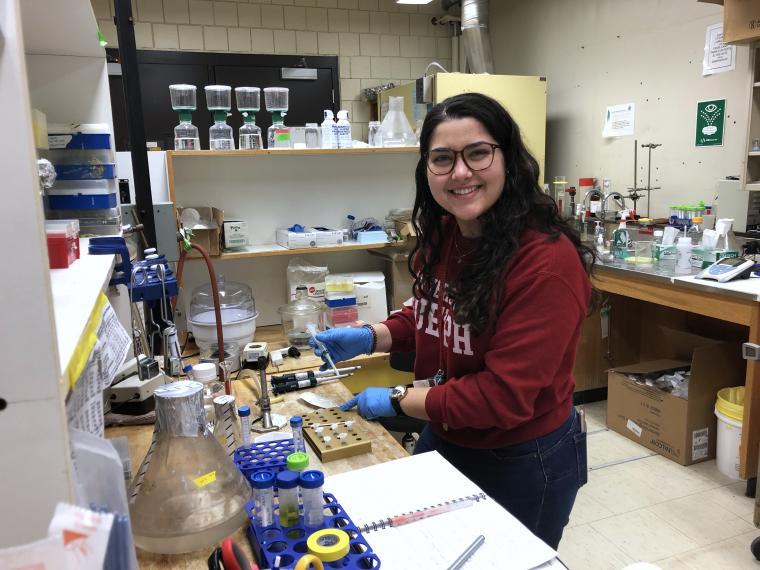Unravelling the Mechanism Behind a Protein’s Unexpected Function

An Unexpected Discovery
Energy is essential to life, and understanding how biological organisms produce and transform useful forms of energy is of great importance. Many of the energy production pathways in our cells rely on proton pumps – specialized proteins that actively move protons (tiny charged particles) across a cell membrane. This movement of protons creates a gradient that drives biological processes in our bodies, such as energy production.
Specialized proteins called rhodopsins use retinal, a molecule that can convert light into other forms of energy, to perform various functions, including proton pumping. The importance of rhodopsins has led these proteins to be studied extensively for more than 50 years. However, a few years ago a new type of rhodopsin proton pump was discovered – one that works in reverse. The mechanism and significance of these proton pumps remains unclear.
A Potential Mechanism
Dr. Leonid Brown, a Professor in the Department of Physics at the University of Guelph, studies rhodopsins and their functions. Brown was intrigued by this new type of proton pump, called inward proton pumps.

“Proton pumps are everywhere, forming the basis of bioenergetics,” says Brown. “Inward proton pumps are something new. We wanted to work on uncovering the mechanism driving the physics of this new type of protein.”
Since retinal is the key behind the light-activation of these inward proton pumps, Brown and his graduate students began by producing a special form of retinal for their experiments. By feeding bacteria a labelled food source, they produced a labelled retinal for experiments. A combination of techniques was used to characterize the labelled retinal, including nuclear magnetic resonance (NMR) to identify the chemical environment of each atom in the retinal molecule, and computer simulations to validate these results. From these studies, unique interactions between retinal, the rest of the rhodopsin protein, and water were observed. The findings suggest a potential cause for the reversal of the proton pump direction.
Another Mystery
The purpose of inward proton pumps is still unclear, but studies like this can help to unravel the mystery.
“We have some understanding of how inward proton pumps work, but we’re also interested in why, biologically, they exist,” says Brown.
The team plans to continue their work in future research studies.
This story was written by Carley Miki as part of the Science Communicators: Research @ CEPS initiative. Miki is a PhD candidate in the Department of Physics under Dr. John Dutcher. Her research focus is on understanding the forces and interactions between soft, sugar-based nanoparticles and how they differ when charged.
This work is supported by the National Sciences and Engineering Research Council (NSERC) of Canada, the University of Guelph, and the German Research foundation (DFG).
Pinto, M., et. al. Retinal Chromophore Environment in an Inward Light-Driven Proton Pump Studied by Solid-state NMR and Hydrogen-Bond Network Analysis. Phys. Chem. Chem. Phys., 2024, DOI: 10.1039/D4CP02611J.